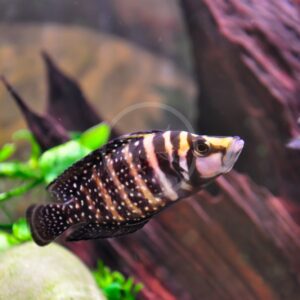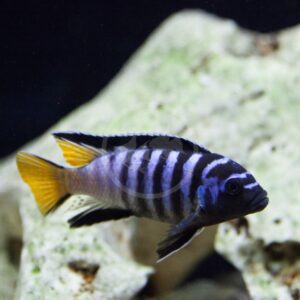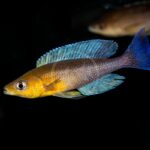

CICHLID – SARDINE / CYPRICHROMIS LEPTOSOMA
Cyprichromis leptosoma
$29.99
The Cyprichromis Leptosoma Cichlid, also known as the Sardine Cichlid or referred to as just Cyprichromis for short, are endemic to open waters adjacent to rocky slopes of Lake Tanganyika in Africa. Cyprichromis are a unique-looking cichlid, having a more streamlined body shape. Males are more colorful than females, though color and patterning of Cyprichormis vary to the collection locale of Lake Tanganyika with at least 6 geographic color forms circulating in the aquarium trade. For the Cyprichromis leptosoma, adult males will have a neon blue body and bright yellow or blue tail. Adult females will have a beige body with a sheen of blue. Keep in mind that most individuals for sale are young, with males in particular having not yet reached their full potential. Cyprichromis are very peaceful and delicate, and therefore should not be kept with aggressive species as they will be easily bullied; this will also reduce the spectacular color of your Cyprichromis. Cyprichromis are extremely gregarious in nature, with several thousand individuals gathering to shoal and feed on organisms suspended in the water column. Given this behavior, Cyprichromis absolutely need to be kept in groups of at least ten individuals but more are encouraged. The larger the group, the more secure your Cyprichromis will feel as they can be quite nervous otherwise. The group will ideally include several males that are greatly outnumbered by females. Having multiple males will ensure their best coloration is displayed as they try to gain the attention of females, and even the more subordinate males will show good color in this species. An adult Cyprichromis will grow to approximately 5″, with females averaging slightly smaller than males.
Care Level: Advanced
Temperament: Peaceful
Live Plant Safe: Yes
General Description: The Cyprichromis Leptosoma Cichlid, also known as the Sardine Cichlid or referred to as just Cyprichromis for short, are endemic to open waters adjacent to rocky slopes of Lake Tanganyika in Africa. Cyprichromis are a unique-looking cichlid, having a more streamlined body shape. Males are more colorful than females, though color and patterning of Cyprichormis vary to the collection locale of Lake Tanganyika with at least 6 geographic color forms circulating in the aquarium trade. For the Cyprichromis leptosoma, adult males will have a neon blue body and bright yellow or blue tail. Adult females will have a beige body with a sheen of blue. Keep in mind that most individuals for sale are young, with males in particular having not yet reached their full potential. Cyprichromis are very peaceful and delicate, and therefore should not be kept with aggressive species as they will be easily bullied; this will also reduce the spectacular color of your Cyprichromis. Cyprichromis are extremely gregarious in nature, with several thousand individuals gathering to shoal and feed on organisms suspended in the water column. Given this behavior, Cyprichromis absolutely need to be kept in groups of at least ten individuals but more are encouraged. The larger the group, the more secure your Cyprichromis will feel as they can be quite nervous otherwise. The group will ideally include several males that are greatly outnumbered by females. Having multiple males will ensure their best coloration is displayed as they try to gain the attention of females, and even the more subordinate males will show good color in this species. An adult Cyprichromis will grow to approximately 5″, with females averaging slightly smaller than males.
Diet Requirements: Foods should be carefully curated to the small mouths of Cyprichromis. A diet made up of various high quality protein and vegetable based foods are ideal. Such options include frozen brine shrimp, cyclops, daphnia and blood worms, and foods containing Spirulina algae are a plus. Cyprichromis may also accept sinking pellet foods and flake foods as a staple, but these should not make up the majority of their diet. Variety is the spice of life in order to maintain color, immune function and longevity of your fish.
Care Requirements: An established minimum 125 gallon aquarium is ideal for a group of Cyprichromis, as they need a lot of space given their activity level. A secure lid is also needed as these fish have been known to jump. Cyprichromis cannot be put into a biologically immature aquarium, as they are sensitive to ammonia and nitrite. Frequent, small water changes are needed to keep water parameters pristine (Nitrates < 15 ppm). Filtration and water movement should be generous. Given that this species spends its time in the open water, a lot of unobstructed swimming space in the medium and top portion of the aquarium should be provided. Otherwise, a finer substrate is needed for the bottom along with some stacked rocks in areas to create caves, outcrops or sloped walls for visual barriers. African cichlid specific substrates, or even marine Aragonite substrate, are great choices because they will buffer the pH and alkalinity to levels characteristic of Lake Tanganyika that is needed for this species to thrive. Cyprichromis are best kept as a species only tank, though they have been observed to be compatible with other peaceful Tanganyikan cichlid species, particularly Paracyprichromis and shell-dwellers. Recommended water conditions, 76-82° F, KH 10-25, pH 7.8-9.0.
Purchase Size: Medium: 1-1/2” to 2”
Note: Your item may not look identical to the image provided due to variation within species. Purchase sizes are approximate.
Dry goods orders are shipped via US Postal Service or UPS to the address provided at checkout based on the selection made in your website shopping cart. Product is carefully packed to help prevent any damage during shipping. Once processed you will receive a shipment notification via email with tracking number, and delivery notification. Please allow 48 hours for processing after your order is placed.
Perishable items (i.e. live plants, refrigerated/frozen foods) are shipped via US Postal Service 2-3 day to the address provided at checkout for a $25.00 flat rate charge. Items are packed with secure packing material and heat, cold, or Cryo packs as needed to maintain safe temperatures during transit. If one or more perishable items are in the shopping cart at checkout the $25.00 perishable shipping charge will automatically appear and need to be selected. Once processed you will receive a shipment notification via email with tracking number. Please allow 48 hours for processing after your order is placed.
Livestock (i.e. fish, invertebrates, coral) are shipped via UPS Overnight to the address provided at checkout for a $55.00 flat rate charge. Livestock is packed in insulated styrofoam boxes with secure packing material and heat, cold, or Cryo packs as needed to maintain safe temperatures during transit. If one or more livestock items are in the shopping cart at checkout the $55.00 livestock shipping charge will automatically appear and need to be selected. Livestock is shipped Monday through Wednesday ONLY (no weekend delivery is available) weather permitting, and we reserve the right to delay shipping until conditions are appropriate for safe arrival. Once your order is placed we will contact you to arrange the best shipping date based on these criteria. Someone must be available to receive the livestock order on the first delivery attempt. Once processed you will receive a shipment notification via email with tracking number. Please allow 48 hours for processing after your order is placed.
For mixed dry goods/perishable & livestock orders items will be shipped via their corresponding shipping methods outlined above. Dry goods will be shipped via US Postal Service or UPS based on your selection and checkout, while livestock will ship via UPS Overnight for a $55.00 flat rate charge. You will receive separate notifications and tracking numbers for the dry goods and livestock. Please note due to different carriers and shipping methods dry goods and livestock may arrive on different days.
Related products

PLECOSTOMUS – BRISTLENOSE / BUSHYNOSE
Ancistrus sp.
$4.79 – $79.99
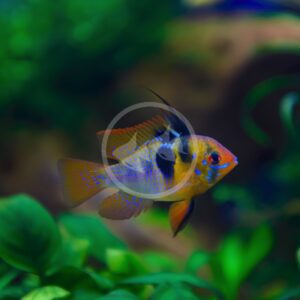
CICHLID – RAM GERMAN BLUE
Mikrogeophagus ramirezi
$12.99 – $24.99
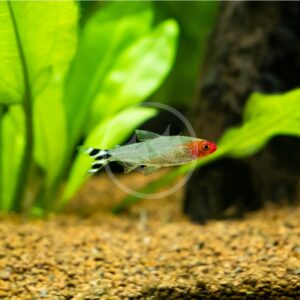
TETRA – RUMMYNOSE
Hemigrammus rhodostomuss
$9.99

ANGELFISH – FW GOLD
Pterophyllum scalare
$9.99 – $19.99
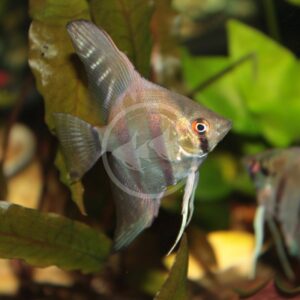
ANGELFISH – FW SILVER
Pterophyllum scalare
$9.99 – $39.99
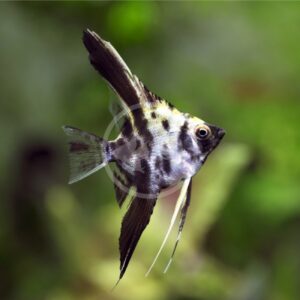

ANGELFISH – FW MARBLE
Pterophyllum scalare
$6.99 – $99.99
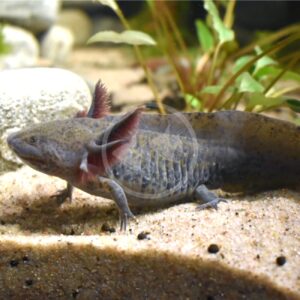
AXOLOTL – WILD TYPE
Ambystoma mexicanum
$59.99 – $89.99



